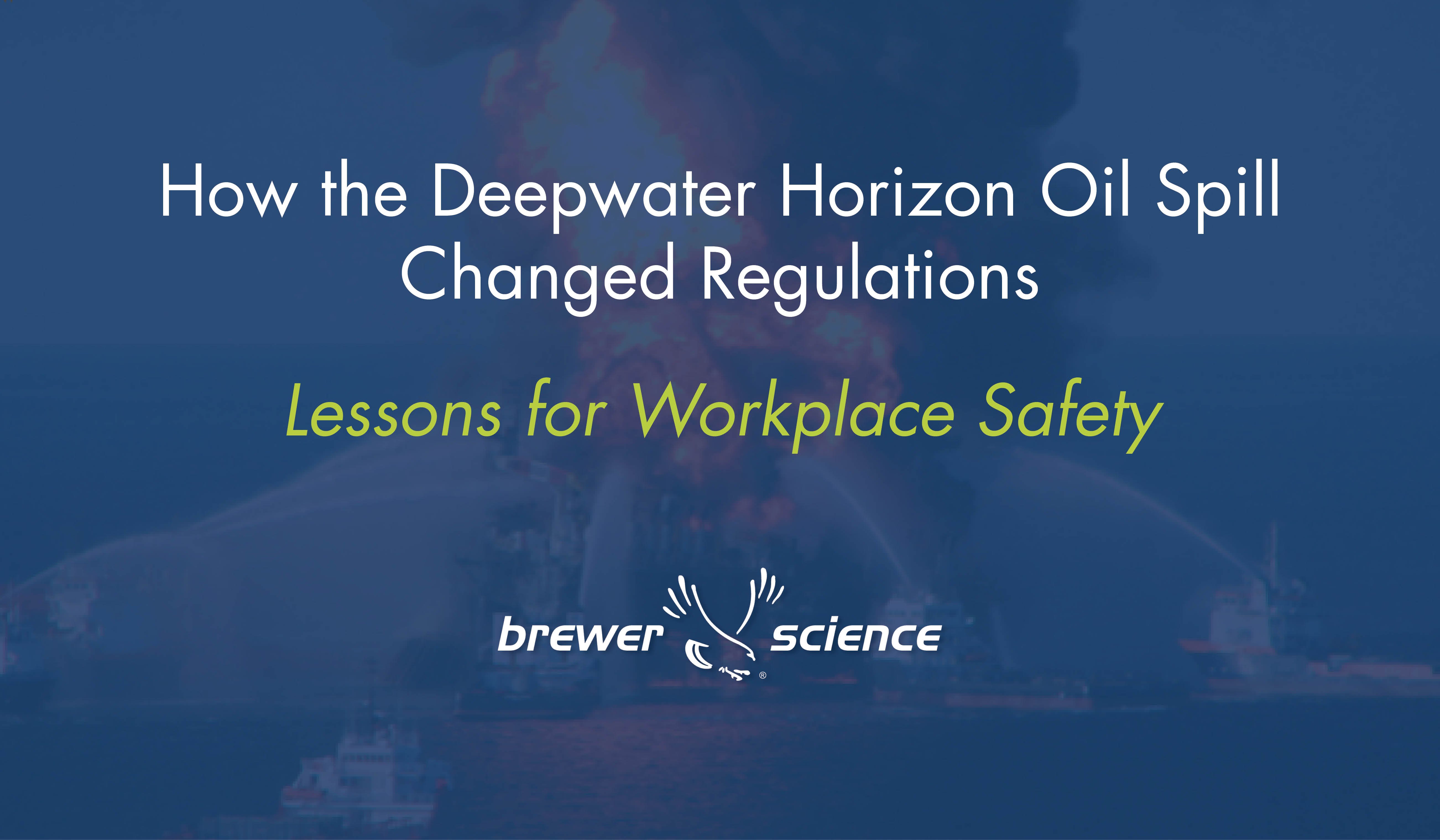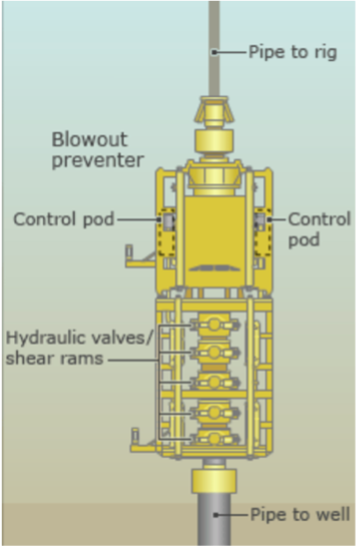Join McKenzie Turner, Safety Intern at Brewer Science, as she recounts significant historical moments that led to the safety rules and regulations we have in place in today’s workplaces.
The Deepwater Horizon oil spill on April 20th, 2010, was the largest marine oil spill in history, marking a significant change in the oil industry and safety standards thereafter.
What data do we have on the Deepwater Horizon oil spill?
BP leased the oil rig, however, it was owned and operated by an offshore company called Transocean. The drilling reached a depth of nearly 1 mile, at 5,000 ft deep. Located 41 miles off the shore of Louisiana, the Deepwater Horizon drilling rig was 9 years old. Nearly 5 million barrels of oil were discharged from the rig, which began a very long cleanup and investigation.
Who was affected by the Deepwater Horizon oil spill?
After three days, search and rescue operators couldn’t locate eleven workers, believing them to have died in the explosion. There were 94 workers rescued by lifeboats or helicopters, 17 of which were treated for injuries.
What caused the Deepwater Horizon oil spill?
On April 20th, 2010, high-pressure methane gas started expanding upward into the marine riser and rose into the drilling rig. The marine riser is an extension of the conduit pipe that helps transfer the oil from the ocean floor to the drilling rig at the surface. The pressure ignited at the top of the rig and exploded, creating smoke and fire that could be seen up to 40 miles away.
BP attempted to activate the Blowout Preventer that was designed to close the drill pipe from which oil was drawn. However, the mechanics of the Blowout Preventer failed. The last resort was a pair of blind shear rams, that were activated manually or by automated emergency systems. Blind shear rams are a very strong component of the blowout preventors that close the drill pipe, sealing the tubing completely. It is a very important part of the marine riser preventing the oil from traveling to the rig. Since the Blowout Preventers failed, the oil and gas from the ocean floor went into the riser chamber undetected and bypassed all the emergency stop barriers. Workers didn’t start closing the Blowout Preventers until after the drilling mud was already in the rig, thus resulting in an incomplete seal of the well. Closing the blind shear ram would soon prove to be only a temporary fix. The pressure in the drill pipe climbed, and the pipe then buckled causing the blind shear ram to leak oil and gas. The devices couldn’t shut out the oil because it had malfunctioned. Once it reached the top of the rig, the hydrocarbons in the oil and gas found an ignition source and created an explosion.
How did Deepwater Horizon oil spill shape changes to government safety regulations?
After the Deepwater Horizon oil spill incident, government programs inside of the Department of the Interior Minerals Management Services underwent reform to separate the Safety Bureau, which meant that the Safety Bureau was no longer involved in the leasing and development of the oil and gas tracks in the Gulf of Mexico.
National Commission on the BP Deepwater Oil Spill and Offshore Drilling challenged the industry to find a way to stop and detect a blowout faster than what occurred at Deepwater Horizon. They recommended that there should be a more systemic way to assess the overall safety risk, not just individual processes, in a collective way. The Commission had also pushed Congress to create a law and increase the liability limits to pay for the full removal costs, plus $75 million for an offshore blowout from an offshore facility.
What can we learn from the Deepwater Horizon oil spill?
Preventive Maintenance is an important step of maintaining the proper safety margin of pressure inside of the drill pipe. Since the Blowout Preventers in Deepwater Horizon hadn’t been inspected and were not working right, the Oil Spill Commission reinstated the requirements that there be a third-party independent inspection of Blowout Preventers. There also became a requirement to have continuous 24/7 onshore monitoring by technical teams that are watching what is happening at the well and communicating with those who are out on the rig.
How were government agencies involved in the Deepwater Horizon oil spill?
Occupational Safety and Health Agency (OSHA) made a statement about its responsibilities based on the regulations, that it was not responsible for regulatory or enforcement over the oil drilling rigs and production platforms that are located on the Outer Continental Shelf. According to OSHA 29 C.F.R. § 1975.1, OSHA claimed it could not regulate a working condition if it is regulated by another agency of the federal government. However, OSHA ensures that workers are protected from hazards that are associated with the cleanup of the spill. Oil spill workers face hazards from heat, falls, drowning, fatigue, loud noises, sharp objects, and exposure to crude oil and chemical byproducts. It is their top priority to ensure that the cleanup operations are done safely and as effectively as possible.
The Environmental Protection Agency (EPA) is in charge of preventing, preparing, and responding to oil spills inland and around the water of the United States. It is the lead federal response agency for oil spills. The oil spill resulted in many lawsuits against Transocean Holdings LLC, totaling up to $4 billion in civil and criminal fines and penalties. Of that amount, $300 million are in criminal fines and enable the ongoing operation in the government’s criminal action. Then, $2.54 billion went to resolving the National Fish and Wildlife Foundation, with the remaining $500 million to create the Gulf Research Program. The EPA came out shortly after the lawsuit ended and stated, “EPA will continue to work with Department of Justice and its federal parties to vigorously pursue the government’s claims against all responsible parties and ensure that we are taking every possible step to restore and protect the Gulf Coast ecosystem.” Safety had changed that year for the better protection of the workers on the rig, those who were on the clean-up efforts, and for our environment. There is still a lot that we can learn from, but each step is making our world safer and healthier.
The events of the Deepwater Horizon Oil Spill, while tragic, serve as an important reminder of how workplace safety plays in the success of a company’s endeavor. Learn more about Brewer Science’s workplace environmental safety.
Learn more about internships and other career opportunities at Brewer Science.
